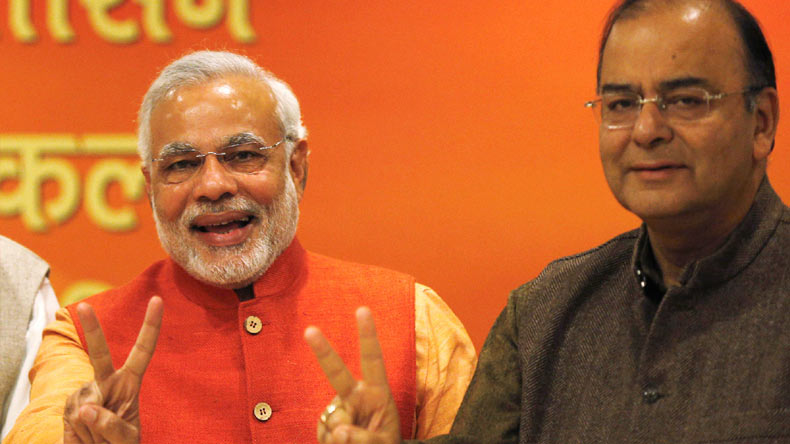Modi government may increase the income tax exemption limit to 5 lakh rupees in 2019 interim budget, according to a report by Republic. The interim budget is to be presented on February 1, 2019 and the NDA government is likely to double the income tax exemption limit from the existing 2.5 lakh rupees. As of now, the tax on income up to 5 lakh rupees is 10 percent. The corporate tax which is 25 percent for the companies making turnover up to 250 crore rupees is expected to remain the same.
The increase in income tax exemption limit will be a gift for the middle class by Modi government. Earlier middle class was benefitted from the implementation of GST. According to research based on consumer expenditure data, a household would be saving Rs 320 every month on their monthly spend of Rs 8,400 on 10 goods- cereals, edible oil, sugar, chocolates, namkeen and sweets, cosmetics and toiletries, washing powder, tiles, furniture and coir products and other household products. Earlier, tax in the monthly expenses of 8,400 rupees on daily-use items was 830 rupees while in the post-GST era, it has been reduced to 510 rupees thus saving almost 320 rupees for the consumer. A few weeks ago, PM Narendra Modi announced that the government shall ensure that 99% of goods will be brought under the 18% GST slab or lower, leaving only luxury & sin items in the 28% tax slab.
During the period 2014 to 2018, several income tax incentives have been given to the middle-class taxpayers, the prominent ones being firstly, the raising of basic exemption limit from an annual income of Rs 200,000 to Rs 250,000. The tax rate for the lowest tax slab has also been dropped to 5% from 10% in 2017 saving the taxpayer a total amount of Rs. 17500. Secondly, Tax-free income for salaried class and pensioners has been raised to Rs 290,000 by way of Rs 40,000. Consequent upon these benefits, the tax liability of a person having income of Rs. 500,000 has come down to Rs 5,200 in FY 2018-19 from Rs 18,540 in FY 2013-14. Similarly, for a person earning income of Rs 10,00,000, the tax liability has come down to Rs 75,400 in FY 2018-19 from Rs 1,10,210 in FY 2013-14.
In terms of benefits to the Middle class, Consumer Inflation in the last four years has remained stable and within the 3 to 5 percent target. In the period Oct 2018-March 2019 inflation has been marked at 2.7 percent amid lower food and fuel prices. Inflation Rate in India averaged 6.37 percent from 2012 until 2018, reaching an all-time high of 12.17 percent in November of 2013 and a record low of 1.54 percent in June of 2017. Double-digit inflation had choked the middle class and the poor in the UPA-2 era and prices of food and fuel had spiraled uncontrollably. Relative to that gross instability, inflation rates in the last four years have been historically ideal for the consumer, even as India’s economy sustains a GDP growth rate of 7.1 percent, remaining fastest in the world.
The middle class has benefitted, in more ways than can be summarized in one go, while also keeping up with some mammoth reforms like demonetization and GST. The wellbeing of the poor as well the health of the economy and its PSUs is paramount to the nation’s progress and it can well be credited to the honest taxpayers, but unlike tax brackets, progress may not always be consistent and can only be made possible with shrewd, performance-oriented governments that have a far-sighted vision for the country.
